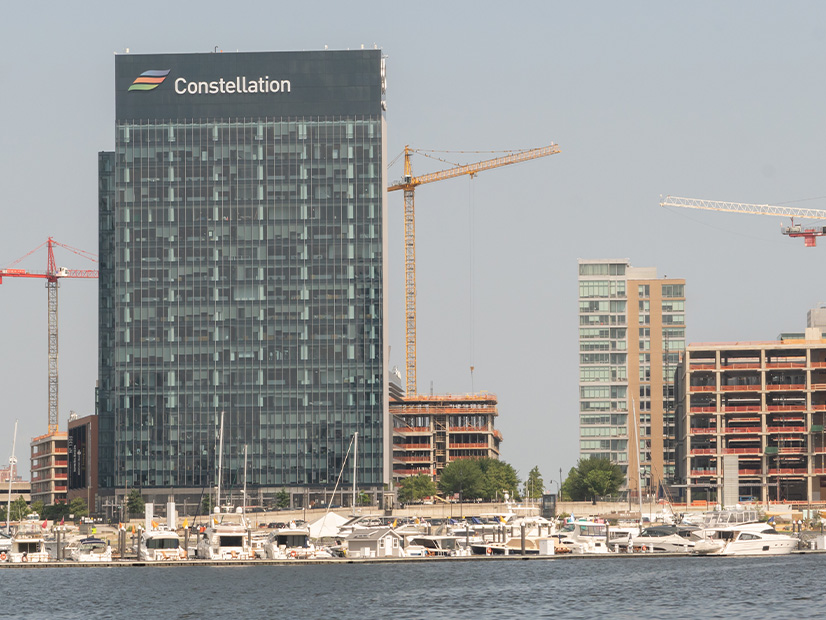Constellation Energy Corp. is looking at squeezing more megawatts out of existing reactors, extending their operational lifespans and building new generation beside existing facilities.
Constellation CEO Joe Dominguez said the company continues to believe nuclear fission is the most reliable and therefore best option for emissions-free electricity, and as long as policy support continues, Constellation will seek to supply more of it.
“Our country needs what we have — clean and dependable power generation to drive economic growth [and] support our national security and our environmental goals,” he said during a May 9 conference call with financial analysts to discuss first-quarter results.
“We intend that Constellation will be a leader in adding new clean, reliable megawatts to the grid to meet the needs of American families and businesses.”
Dominguez identified three strategies the company will pursue to accomplish this:
-
- Keeping existing reactors in service into the 2060s would limit the need to build new full-size reactors, a costly and lengthy process. Constellation has sought and/or received license extensions for five facilities and will seek more if supportive policies remain in place, Dominguez said. This by itself would create “more clean energy than all of the renewables ever built in this country,” he said.
- Upgrading existing reactors would maximize their output — previously announced updates at the Byron and Braidwood generating stations will yield 160 MW in the next few years, Dominguez said. “We’re looking at many opportunities to do that at other plants. We believe that the opportunities will add up to 1,000 MW, or perhaps more,” he said.
- “Third, we’re looking to partner with others to locate new technologies, including new nuclear, at our existing sites,” Dominguez said. The existing nuclear facilities enjoy community support and have the capability to support expansion, he said, making them the logical place to add new capacity.
Dominguez opened the call with a tribute to Chris Crane, who died in April at 65. As CEO of Exelon, Crane paved the way for the spinoff Constellation to shine as the largest U.S. operator of nuclear power generation, Dominguez said.
“He was an all-of-the-above energy thinker who cared about nuclear because he was sure that you could not run a full-time clean energy economy just on part-time power,” Dominguez said.
This idea of full-time power is central to Constellation’s business plan as state and national leaders press the clean energy transition: Nuclear generates electricity when the sun is not shining and the wind is not blowing, and in nearly every other circumstance. Output from photovoltaic panels and wind turbines is intermittent.
Constellation’s nuclear fleet had a 93.3% capacity factor in the first quarter of 2024, and that was at the lower end of performance recorded in the previous eight quarters.
The U.S. Energy Information Administration reports the capacity factor for land-based wind generation reached an all-time high of 35.9% in 2022. The highest capacity factor for solar in the past 10 years was 25.6% nationally. Both clean energy technologies vary greatly by region and season.
Nuclear power still has many critics, due to the exorbitant cost of new construction and radiation hazards, but it has gained support on both sides of the aisle for this ability to steadily produce electricity without also producing carbon dioxide.
“State legislatures have 130 bills out there to support nuclear energy this year, compared to five to 10 historically,” Dominguez said. “They’re removing barriers to nuclear by repealing moratoriums on building new nuclear, and they’re developing regulations to support new development in the states. And six states, red and blue, have created incentives in their state budgets to attract nuclear to their state.”
Constellation’s GAAP net income was $2.78 per share in the first quarter of 2024, and its adjusted (non-GAAP) income was $1.82. This compares with $0.29 and $0.78 in the first quarter of 2023.
Constellation’s stock price has increased 176% in the past year and 426% since it began trading in January 2022. It closed 3.8% higher May 9.


